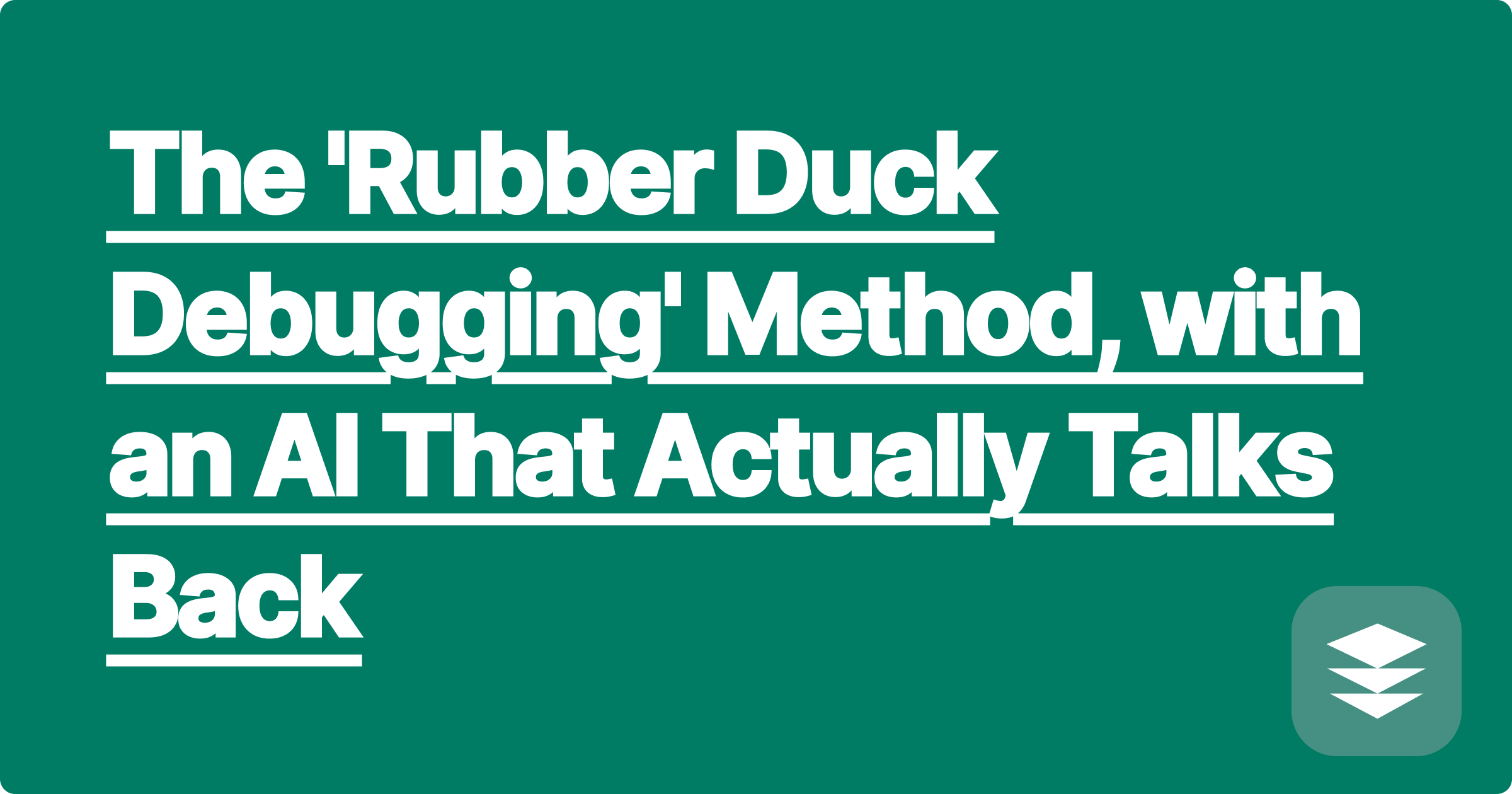
There's a strange but incredibly effective debugging technique famous among software developers: Rubber Duck Debugging. The method is simple. When you are stuck on a coding problem, you get a small, inanimate rubber duck and explain your code to it, line by line, as if it were a living person. Inevitably, in the process of articulating your logic out loud, you will stumble upon your own mistake. "First, I assign the variable x... then I pass it to this function... wait a minute. That function needs y, not x." By forcing yourself to explain, you find the flaw.
This method is powerful, but the duck has one major limitation: it doesn't talk back. What if your "rubber duck" could not only listen, but also understand, ask clarifying questions, and offer suggestions? What if you had an ai pair programmer available 24/7? This is the evolution of Rubber Duck Debugging, powered by AI.
Using a tool like GPAI Solver transforms this technique from a monologue into a dialogue.
The Advanced "Rubber Duck" Workflow:
[Image: A split graphic. On the left, a frustrated programmer is talking to a small, silent rubber duck on their desk. On the right, a confident programmer is chatting with the GPAI interface, which is providing intelligent feedback on their code. Alt-text: A visual showing the evolution from Rubber Duck Debugging to using an AI pair programmer.]
This interactive process goes beyond just finding bugs.
This rubber duck debugging ai workflow is powerful because it combines the best of both worlds. You get the cognitive benefit of articulating your own logic (the original "rubber duck" part), but you also get the instant, expert feedback of a master programmer who never gets tired and is always available.
A: No, it's different. A human partner brings creativity, shared experience, and camaraderie. An AI partner brings instant recall of all documentation, perfect logical consistency, and 24/7 availability. They are different tools for different situations.
A: On the contrary. It makes you a more disciplined and communicative coder. The habit of being able to clearly explain your code and its logic is one of the most important skills for working in a team. Practicing with an AI hones this skill.
Every programmer needs a sounding board—a second set of "eyes" to check their work and question their assumptions. For centuries, this has been a rubber duck or a patient colleague. Today, you can have a world-class AI pair programmer on demand. It's the fastest way to get unstuck, write cleaner code, and become a better developer.
[Never code alone again. Use the GPAI Solver as your personal AI pair programmer. Sign up for 100 free credits.]
How to Use GPAI as Your Personal 'Fact-Checker' Before You Speak Up in Class
The 'Rubber Duck Debugging' Method, with an AI That Actually Talks Back
I Have a Terrible Memory': Using an AI Notetaker as a Prosthetic Memory
The Art of the Nap: How AI Can Help You Study in Short, Intense Bursts
What Your Choice of AI Tool Says About Your Personality
How to Build a 'Career Moat' Using Your AI-Generated Knowledge Base
Surviving a Professor Known for 'Trick Questions' with an AI Test Generator
Is This Concept on the Exam? Using AI to Analyze Past Tests
The Ultimate 'Pre-Lecture' Ritual: How to Prime Your Brain in 5 Minutes
Did I Plagiarize Myself?': Using an AI to Rephrase Your Own Previous Work